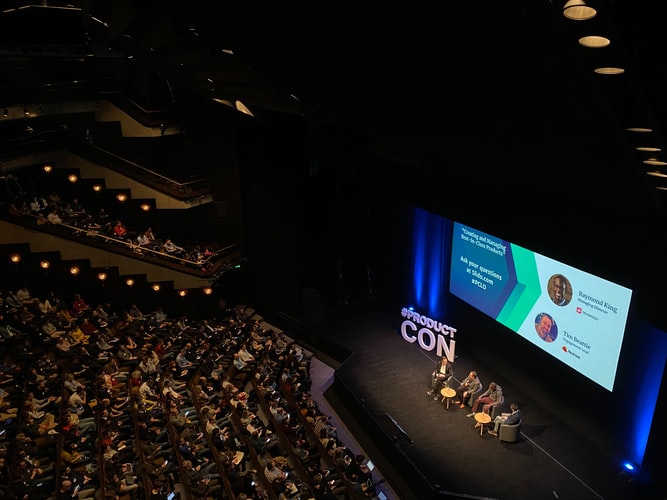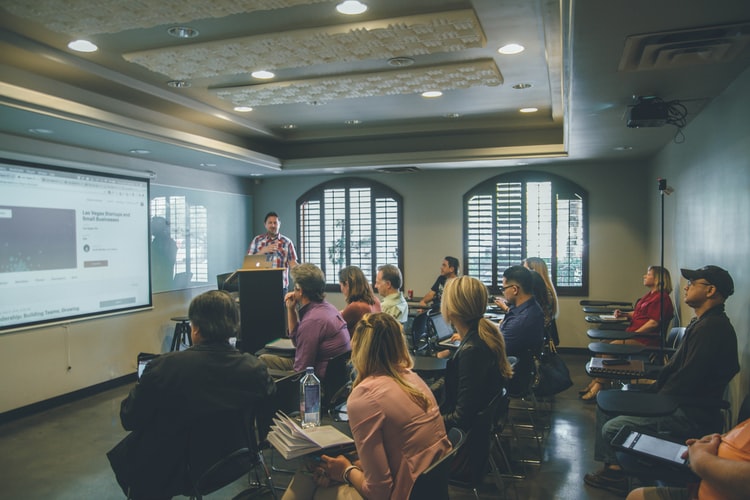Author: Luis-Miguel Romero – Translation: Erika-Lucia Gonzalez-Carrion

There are several ways to disseminate research results. Although the scientific article is the route par excellence, since it guarantees editorial and peer review, as well as a specific scientific community of readers and the inclusion of the manuscript in databases, there are other platforms and media that will give visibility to our studies and serve, in turn, as means of transfer, such as books and book chapters resulting from research, communications and posters at congresses and scientific meetings, conferences, documentaries, informative articles, blogs and videoblogs, among others.
A congress is a meeting of academics researching on a specific topic, although they are also usually open to participants from the professional sector and to students and researchers in training. One of their fundamental characteristics is that they are usually convened and/or endorsed by a higher education institution or research center, as well as by associations, societies, networks and research groups. Another of the particularities of these meetings is their periodicity -usually annual or biannual- and that, like journals, they have a prior peer review process for the abstracts, full papers or posters to be presented. Since congresses can bring together hundreds or thousands of participants, they are organized internally in sessions, symposia or simultaneous tables, although they also usually have plenary lectures given by renowned experts invited by the organizing committee. Each table or symposium is directly linked to the central discipline of the congress, but for reasons of thematic interest brings together a number of communications that revolve around that sub-theme. Thus, for example, in a Communication Congress it is usual to find one or several symposia on audiovisual narratives, others on journalism, others on social networks, others on advertising, others on corporate communication, others on educommunication, etc. This allows researchers to congregate around their specialty topic within the discipline, which will facilitate the debate and improve the quality of the discussions.

Research-in-progress and dissemination papers
The participation of researchers in a congress can take place either in the middle of a research (research in progress) in which claims, justifications, research questions, comments, objectives, hypotheses and even preliminary results are presented; or after the research has been completed.
When researchers come to a conference to present research in progress, they are looking for the following:
- To give visibility to a research group, network or team, informing other researchers participating in the event about the activities that are being developed within the framework of a specific project.
- Test before a reduced scientific community the relevance and adequacy of the scope, approach and objectives of the research being developed.
- Obtain feedback from fellow researchers that can improve the quality of the ongoing study.
- Networking to attract other researchers, groups, networks and research centers that may be interested in the project.
- Seek funding mechanisms to give continuity to the project presented.
Research in progress are usually short communications (short communications) that last between 3 and 5 minutes, giving more space for discussion at the symposium, understanding that its purpose is precisely that: to obtain various feedbacks to improve or redirect the research being done.
Dissemination communications, on the other hand, are about completed research, even published in other media (articles, chapters, books, reports…), whose purpose is to give visibility to the study, especially to its results, conclusions and implications. It is important to note that, although it is admissible to participate in a communication that is already published in other media, if the congress decides together with the authors to publish the communication in a book of proceedings, scientific journal, yearbook or any other platform, it must be unpublished, otherwise it would mean self-plagiarism – with all that this entails ethically. However, there are congresses in some disciplines that allow full reproduction of the content of another published document, with prior authorization from the holder of the reproduction rights, and of course duly indicating the source from which the text is extracted (by).

Recommendations to take into account when participating in a congress
Congresses have become a very important source of income for some entities, especially in countries where the participation of researchers in many of them is required for accreditation, access to the University or promotion in the teaching ranks. In this sense, these types of activities have proliferated, although on many occasions they are nothing more than an event -even a virtual one- in which there is not the slightest hint of research.
The first recommendation when choosing to participate in a congress is its endorsement or affiliation, because just as there are predatory journals, there are also congresses of this nature. For this reason, it is recommended to prioritize those that are organized by recognized scientific societies and associations, such as – in the case of Communication – International Communication Association (ICA), the International Association for Media and Communication Research (IAMCR), theEuropean Communication Research and Education Association (ECREA), theNordic Information Center for Media and Communication Research (Nordicom), theAsociación Española de Investigación de la Comunicación (AE-IC), the Sociedad Española de Periodística (SEP), or the Asociación Latinoamericana de Investigadores de la Comunicación (ALAIC), among others.
There are also congresses that, although not organized by associations and societies, have become international benchmarks due to their long history, the composition of the scientific committee, the relevance of their organizers and international endorsements.
If the purpose of participating in a congress is to seek a space to present research, seek specialized feedback, debate with colleagues, contribute observations and recommendations in other presentations, network and, in short, give greater visibility to researchers and their work, one should choose to participate in congresses that are referents in the specific area of knowledge, thus avoiding at all costs those generic congresses or those with a broad disciplinary scope (something like Congress of Science, Technology, Art, Humanities and Social and Health Sciences).
Likewise, it is common practice for congresses, in order to become more competitive in the market, in addition to the book of abstracts that compiles the abstracts of the research to be presented at each table or symposium, to publish a book of full papers -usually with a recognized publisher-, and even have agreements with some scientific journals in the area so that the best publications (in the opinion of an evaluation committee) are peer reviewed in these journals. However, it is not an ethical or responsible practice for congresses to guarantee, with the mere approval of an abstract and payment of registration fees, that all communications will be published in journals or collective works, as this reduces the selectivity of the publications, affecting the quality of the final product and, ultimately, the name and reputation of the researchers who publish in them.
Finally, there are congresses that are held in paradisiacal enclaves, so that researchers take advantage of them to engage in academic tourism. Although we are not going to deny here the suitability of combining the scientific agenda with the social agenda, including for networking, these types of meetings should be doubly reviewed in terms of their trajectory, reputation, members of the scientific committee and institutional endorsements. Here it is necessary to remember that the effectiveness of participation in congresses is not measured in the photos we publish in the framework of the same, but in the notes in the notebook, the research ideas, the dissemination of our studies and the new contacts we manage to make, even more so when the resources we use to attend are from a University, research project or the State.
